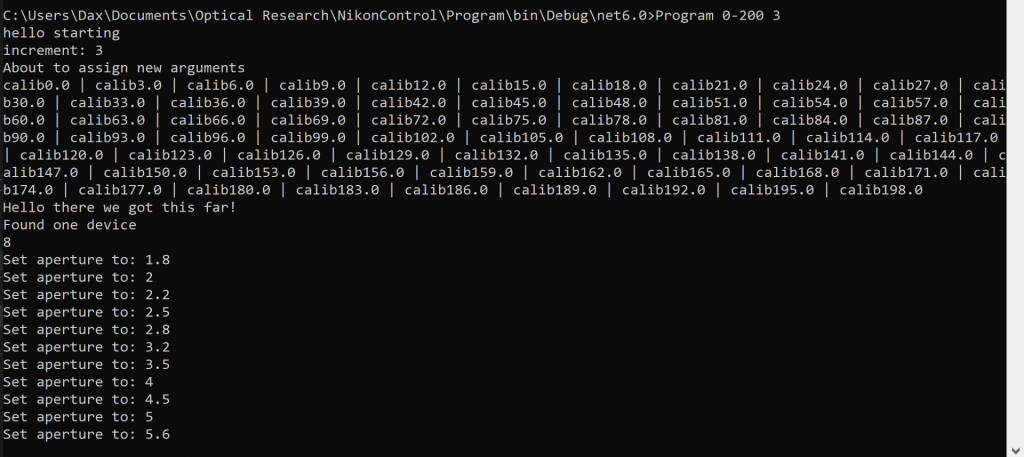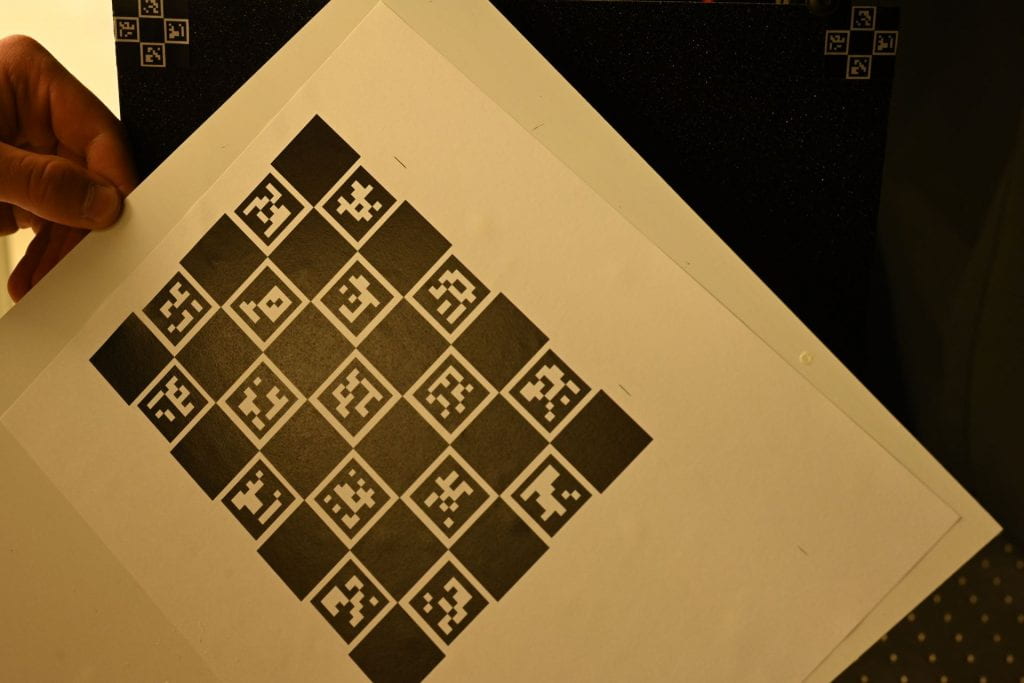This week, @Oliver joined the team and brought some new energy to the project, specifically directed at re-imagining our glitter capturing rig! Last week, we wrote the rudimentary bar display and glitter capture scripts and this week, they got packaged into a more user-friendly and hassle-free executable. This can now be ran over a range of calibration images as shown in figure 1. The calibration program can also now control camera parameters such as aperture, focal zoom, and more features are being added as we see fit. Currently, its structure allows us to define how big of a range of our 760 images of the sweeping white line we want to display. For example, we can call the program as "Program 0-760 2" where it will iterate over the entire catalogue of vertical lines, calling every 2nd image and thus having our vertical line move by 10 pixels each photo (2 x 5pixels).

We found it was also very useful to control as many camera parameters as possible given the new capture setup is very optically isolated and still a little flimsy as far as our occlusion solution goes (it will no longer be loose curtains in the near future : p). For the first time this week, we also ran the full calibration sequence and arrived at some incredibly Gaussian glitter specs. See O. Broadrick's post for this week!
Moving on, we decided to set up our sights on obtaining a reasonable camera projection matrix with our fiducial markers. Thankfully, opencv has some really handy packages for dealing with Aruco codes. We printed chessboard patterns of different sizes and took images at different projections with our chAruco printout in view, taking special care not to move the camera. Figure 2 shows some of the images we took for camera calibration.

With our collection of 25 chAruco images, we performed our camera calibration, with the notion in mind that this would be our proof-of-concept run. Regardless, we were sure to fix our camera aperture, zoom and shutter timing - all of which we found running experimental trials of our camera capture software and comparing images. We now have a camera matrix which we can use to derive glitter surface normals!

This weekend, we'll be working on capturing new images in our defined setup, both with vertical and horizontal line sweeps. To accomplish this, we'll create a new set of images with vertical line sweeps - additionally, we're trying to develop a way to remotely control our entire apparatus so we've purchased a continuous battery for the camera.